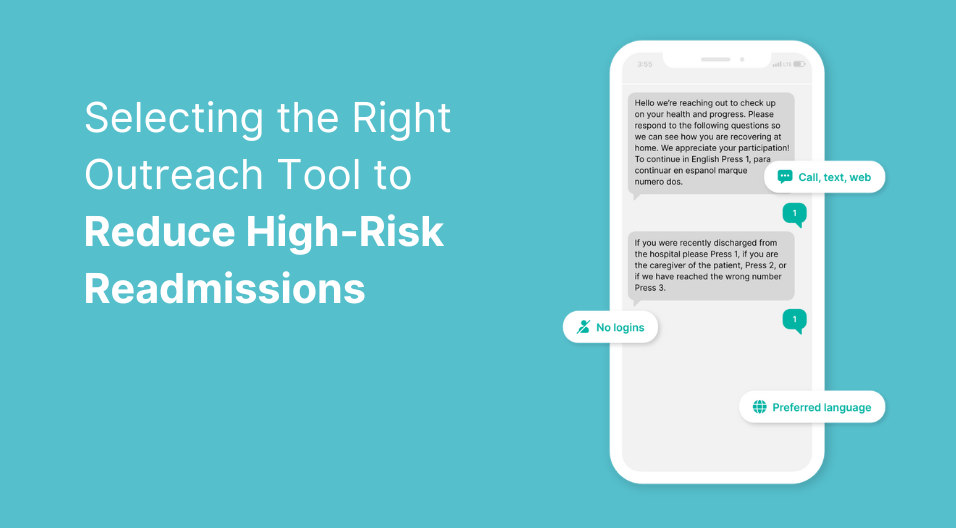Since the Centers for Medicare & Medicaid Services (CMS) began reducing Medicare payments to providers for hospital readmissions within 30 days after discharge, patient readmissions have declined nationally. Across the care continuum, providers are working together to improve patient outcomes. As a result of changing regulations, Home Healthcare Agencies (HHAs) are looking for cost-effective ways to reduce preventable readmissions and prove themselves to be valuable to referral sources.
There are many strategies to reduce readmissions. From remote monitoring to more frequent visits, HHAs need reliable and scalable processes for keeping patients healthy and out of the hospital.

To effectively address patient and organizational needs, take into consideration these five strategies to improve patient outcomes and reduce hospital readmissions:
1. Know which patients are at risk of a readmission
Various factors play a role in patient readmissions. Patients with significant comorbid conditions are more prone to hospital readmissions. (I.e., patients with cancer, pneumonia, certain cardiovascular diseases, etc.). Identify these patients and monitor them closely with
2. Ensure staff members are aware of high-risk patients
Before entering a patient’s home, staff members should know if the patient is at high-risk of readmission. This allows staff members to pay attention for signs of worsening symptoms such as potential infections, pain, and medication compliance.
3. Enhance patient education
Educating patients about their care is key to successful clinical outcomes. Not only can patient education reduce readmissions but, keeping patients engaged and informed improves patient satisfaction and quality of care. Patient education can happen within and outside the home. Using technology, agencies can educate patients on care and medication instructions resulting in adherence to instructions to prevent readmissions.
4. Take special care when dealing with patients with language barriers
Language barriers can cause patients to miss essential care information and can result in a hospital readmission. Staff should check for understanding or use translators when communicating important information. If translators are not readily available, consider recording personalized instructions for patients and family members to access after the home visit.

5. Add touchpoints in between home visits
Agencies can engage with patients in between visits to ensure patient concerns are addressed before a readmission occurs. Connecting with patients outside of their scheduled visits allow agencies to address issues before they become detrimental. Utilizing automated outreach solutions, agencies can ask patients questions concerning their recovery status and triage calls to appropriate staff members if a problem arises. High patient volumes make it nearly impossible to successfully engage with 100% of patients manually. Leveraging technology agencies can proactively identify patients at risk of a readmission.
Changes to the healthcare setting increases pressure on providers to improve quality of care and reduce readmissions. For hospital referral sources hoping to avoid monetary penalties, HHAs must prove they can keep patients from returning to the hospital. By reducing readmissions, HHAs can not only position their agency as a preferred vendor to hospital referral sources but, improve HH- CAHPS scores.
To learn more about how CipherHealth technologies can lower your agency’s readmission rate, visit our website.











